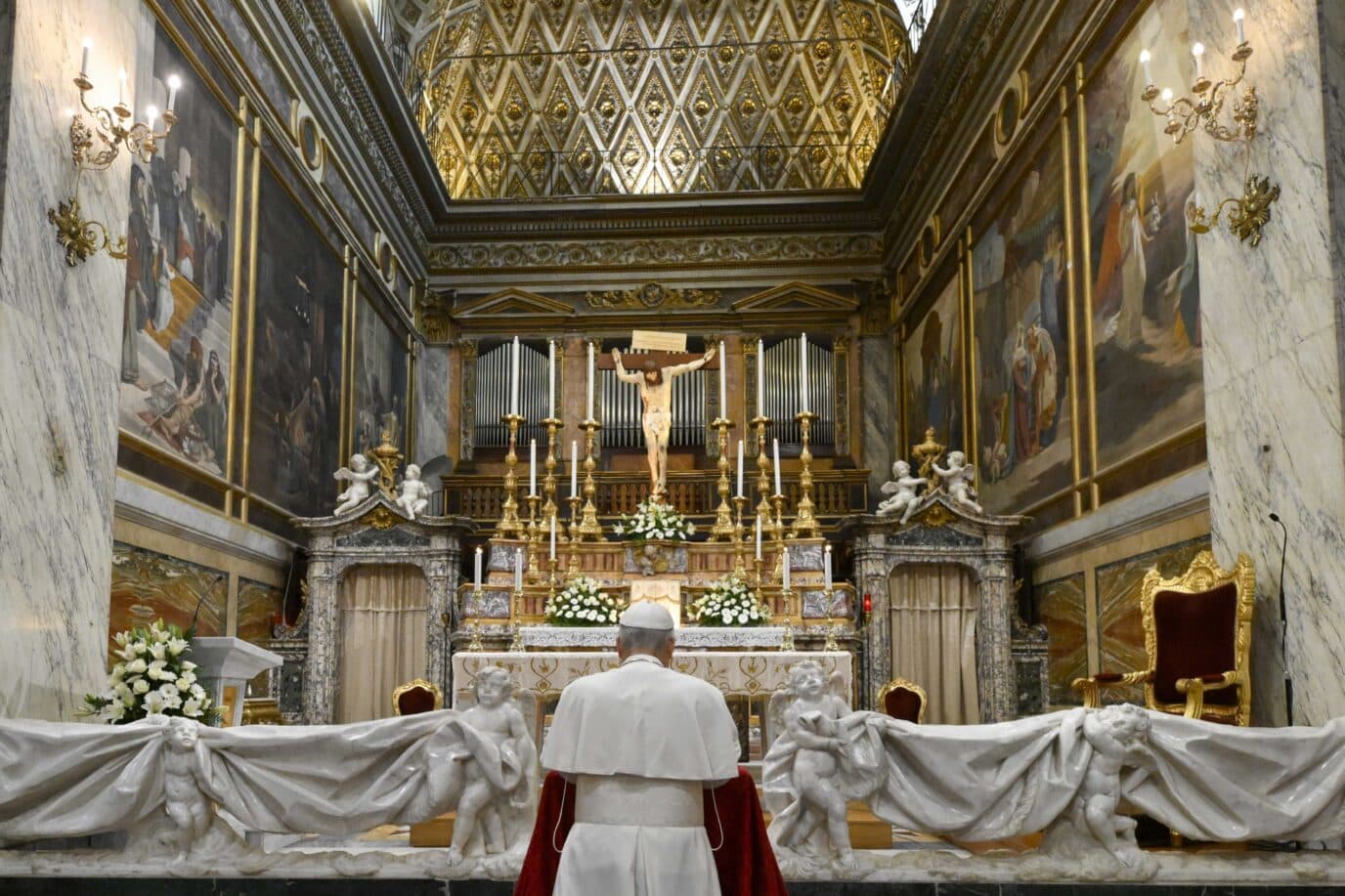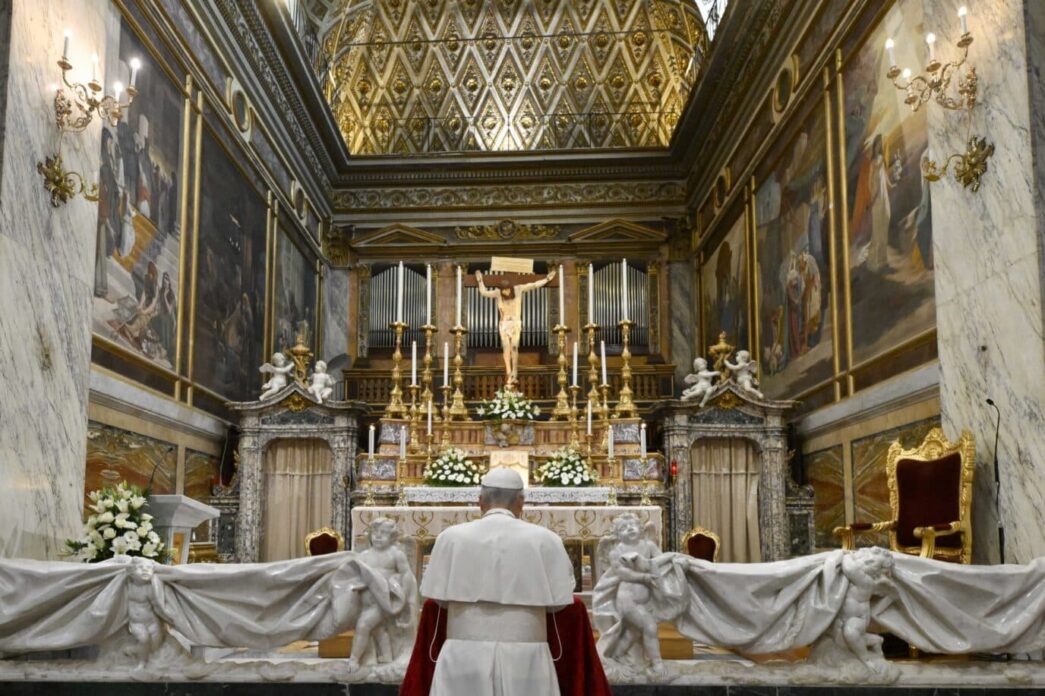This article first appeared in Our Sunday Visitor magazine. Subscribe to receive the monthly magazine here.
Pope Leo XIV made some very cogent observations back in 2012 that summon us to be honest about a culture in disrepair. He also set forth a unique vision that the Church must recover if we are to effectively evangelize and remain true to what we have received.
Let’s look briefly at his description of the disrepair — the poisonous anti-culture that dominates our times — and then set our sights on his vision of an antidote.
The pope, then Father Robert Prevost, prior general of the Order of St. Augustine, was addressing the Synod of Bishops, who had gathered to discuss the new evangelization. He said:
Western mass media is extraordinarily effective in fostering within the general public enormous sympathy for beliefs and practices that are at odds with the Gospel — for example, abortion, homosexual lifestyle, euthanasia … . The sympathy is so … ingrained that when people hear the Christian message, it often inevitably seems ideological and emotionally cruel by contrast to the ostensible humaneness of the anti-Christian perspective.
The Church’s usual response to the culture described here by the future Pope Leo XIV is to venture into the media world and seek to add our own voice more and more effectively. While there is nothing wrong with this, he cautioned:
In order to combat successfully the dominance of the mass media over popular religious and moral imaginations, it is not sufficient for the Church to own its own television media or to sponsor religious films. The proper mission of the Church is to introduce people to the nature of mystery as an antidote to spectacle.
Note that he does not say we should be absent from mass and social media — he just cautions that it alone is not going to be sufficient. In the Church we are too easily drawn to accommodating ourselves to the world and imitating it.
An often-neglected strategy is to distinguish ourselves from the world, as the early Church did. Jesus warned of the world and insisted that he had called us out of the world (Jn 15:18). St. Paul frequently admonishes the first Christians (and us) to distinguish ourselves from the world. For example, he writes to the Ephesians (4:17-23):
You must no longer live as the Gentiles live, in the futility of their minds. They are darkened in their understanding, alienated from the life of God because of their ignorance and hardness of heart. … That is not the way you learned Christ! … You were taught to put away your former way of life … and to be renewed in the spirit of your minds … .
St. John says, “Do not love the world or the things in the world. The love of the Father is not in those who love the world” (1 Jn 2:15).
Hence, the future Leo XIV summons the Church to an approach that is distinctive for us:
Moreover, the Church should resist the temptation to believe that it can compete with modern mass media by turning the sacred liturgy into spectacle. Here again, Church fathers such as Tertullian remind us today that visual spectacle is the domain of the saeculum (the world), and that our proper mission is to introduce people to the nature of mystery as an antidote to spectacle. As a consequence, evangelization in the modern world must find the appropriate means for redirecting public attention away from spectacle and into mystery.
Here is a call to reflection and deep consideration. What is spectacle and what is mystery?
Mystery versus spectacle
Spectacle is from the Latin spectaculum, meaning, most commonly, “a public show.” The word emphasizes the raw act of seeing, hearing or experiencing. Generally, spectacle appeals to our senses; it is bright and loud and “in our face.” Spectacle seeks to overawe us, to entertain and please us — in some cases, to stimulate emotions and thereby capture us in some way. The ancient Romans, and many governments before and since, have used spectacle to amuse and divert the crowds, deliver messages, ensure compliance or seek allegiance.
Mystery, however, is more often found in silent meditation, in careful appreciation and in a deeper understanding based on truth, whether revealed or deeply written in our soul. Mystery does not aim to please the crowd or the individual. In mystery, the focus is not on me but on the other. Something or someone draws me out of the ordinary to a deeper place. Spectacle is about external events, while mystery emphasizes meaning, wonder and appreciation.
However, an additional distinction is important. In the secular world, a mystery is something to be solved, something that baffles us or lies undisclosed. And the usual response of the world to a mystery is to get to the bottom of it, to uncover it. Mysteries must be solved! In the Catholic world, a mystery is something that must be respected. It presupposes that there are hidden aspects of things, people and situations that extend beyond their visible, physical dimensions.
One of the best definitions of mystery I have read is by the French theologian and philosopher Jean Lacroix. Lacroix says, “Mystery is that which opens temporality and gives it depth. It introduces a vertical dimension and makes of it a time of revelation, of unveiling.”
Consider a classic example of event versus mystery: Suppose you and I are at a party, and Smith comes in the door and goes straight away to Jones and warmly shakes his hand. And I say, “Wow, look at that.” Puzzled, you say, “What’s the big deal? So what, they shook hands.” But then I tell you, “Smith and Jones have been enemies for 30 years.”
Thus, the act of shaking hands had a hidden, richer meaning beyond what meets the eye. This is mystery. There is something hidden, something accessible only to those who know and are initiated into the mystery and who come to grasp some dimension of it; it is the deeper reality of things.
The longing for awe and wonder
That then-Father Prevost was right and prophetic in his address to the synod is borne out in our time, 13 years later, by the clearly observable trend of many younger adults finding a home in more ancient liturgical rites and forms.
I once asked some young adults why they like the Tridentine Mass. One said it was like going to Eucharistic adoration (which is also popular among young adults). Another said that too many Masses in her home church were loud, noisy, filled with distractions, announcements, applause and instructions to sing this or do that. Whatever one’s notion of proper liturgy is, there is a clear attraction in many for a less busy, more reflective experience that the Mass used to foster.
None of this is to say that liturgy should be stark and have no richness or pageantry. Clearly good liturgy employs beauty, fine music, chant and solemn formality. But these are meant to point to the mystery of God with us: to Jesus our high priest with his bride the Church, to the multitude of saints and angels gathered about, and to the true presence of Christ in the Eucharist. Pageantry frames the mystery and draws us to it. Spectacle exists only for its own sake.
To illustrate this, we can note that in one of his first addresses, Pope Leo XIV spoke to representatives of the Eastern Catholic Churches, whose liturgies are full of rich music, solemnity and beauty:
The (Western) Church needs you. … We have great need to recover the sense of mystery that remains alive in your liturgies, liturgies that engage the human person in his or her entirety, that sing of the beauty of salvation and evoke a sense of wonder at how God’s majesty embraces our human frailty!
Only time will tell how Pope Leo will lead us into his vision of mystery over spectacle. But for now, it is still clearly on his mind, and it is a powerful and different insight that summons the Church back to her essential role of celebrating the sacred mysteries, ever ancient and ever new.








